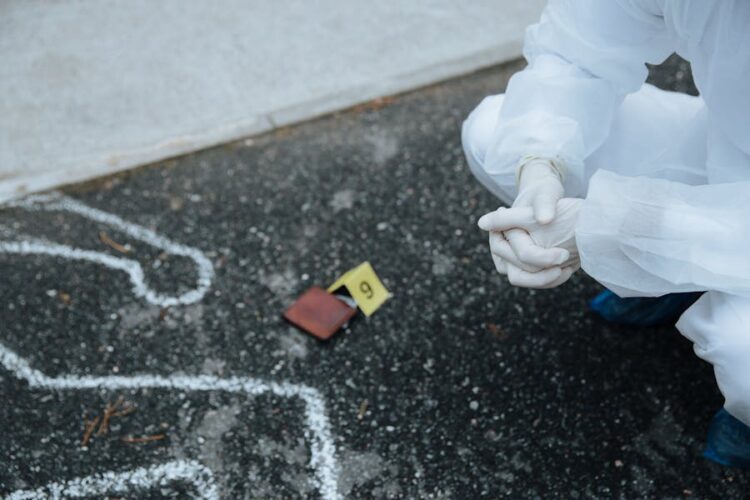In the domain of medical malpractice cases on Long Island, the importance of thorough, precise evidence cannot be overstated. This evidence, often comprised of detailed medical records, visual proofs, and compelling expert testimonies, serves as the keystone in substantiating allegations of negligence. However, the process of gathering and presenting this evidence is filled with complexities, requiring a deep understanding of the healthcare and legal systems. Maneuvering through these intricacies can mean the difference between a successful case and a disappointing outcome. Join this discussion to explore the nuances of evidence collection in medical malpractice cases.
Understanding Medical Malpractice
Medical malpractice, a significant yet often misunderstood concept, refers to a situation where a healthcare professional, through a negligent act or omission, causes injury to a patient. This violation of the standard of care can result in dire consequences for patients, highlighting the importance of understanding both patient rights and doctor’s responsibilities.
Patient rights, the fundamental entitlements of every individual seeking medical attention, are pivotal to ensuring the delivery of quality healthcare. These rights include the provision of competent medical treatment in line with established standards. Doctors, on the other hand, bear the responsibility to uphold these rights by providing diligent, competent, and ethical medical care.
However, in instances of medical malpractice, these patient rights are infringed upon, and the doctor’s responsibilities are neglected. This not only harms the patient physically, but also psychologically and financially. It is essential to comprehend the gravity of medical malpractice as it is not merely a legal issue but a matter of life and death. Consequently, a thorough understanding of medical malpractice can empower patients to advocate for their rights and hold healthcare professionals accountable for their actions.
Legal Definition of Malpractice
Having established the context and seriousness of medical malpractice, it becomes essential to examine its legal definition to fully understand its implications and consequences. Malpractice, in the field of medicine, refers to a healthcare professional’s deviation from the accepted medical practice standards, resulting in harm or injury to the patient. The legal definition encompasses four key elements: duty, breach, causation, and damages.
Duty refers to the obligation of healthcare professionals to provide care in line with the accepted medical standards. Breach is the practitioner’s deviation from these standards. Causation links the breach directly to the injury suffered by the patient. Damages represent the harm or injury sustained by the patient due to the practitioner’s negligence.
Understanding this definition is essential for patients to be aware of their rights and to identify when they have been violated. Additionally, it sets the stage for malpractice penalties intended to correct such breaches and deter future occurrences. These penalties not only hold healthcare professionals accountable but also serve to reinforce the sanctity of patient rights, ensuring that the medical field remains a safe space for all.
Types of Medical Malpractice
There are various types of medical malpractice, each having distinct implications and consequences for the patient involved. In-depth discussion on surgical errors, misdiagnosis, and pharmaceutical mistakes will provide us with a thorough understanding of the multifaceted nature of medical malpractice. By examining these types, we can better comprehend their widespread impact on patients’ lives and the legal ramifications involved.
Surgical Errors Explored
While many individuals place unequivocal trust in their healthcare providers, surgical errors, a prevalent type of medical malpractice in Long Island, often shatter this faith, underscoring the critical need for legal recourse. The gravity of surgical errors range widely, from minor complications to severe, life-altering consequences. It’s vital to highlight:
- The irreparable emotional trauma suffered by victims.
- The potential for physical impairment, or even death.
- The financial burden from subsequent medical treatments.
- The loss of trust in medical professionals.
Medical institutions must prioritize error prevention strategies, emphasizing the importance of patient communication, to mitigate these risks. Ensuring precise surgical procedures and fostering an environment of transparency can help restore patients’ faith in their healthcare providers.
Misdiagnosis and Consequences
In the domain of medical malpractice, misdiagnosis stands as a significant issue, often leading to a cascade of detrimental consequences that can drastically alter the life of a patient. Misdiagnosis statistics reveal a terrifying prevalence of this problem, with studies suggesting that nearly 12 million Americans are victims annually. This highlights the undeniable need for effective patient advocacy to safeguard against such errors. An incorrect diagnosis can result in inappropriate or delayed treatment, potentially escalating an otherwise manageable condition. The patient must bear the physical, emotional, and financial burden of such negligence. It’s imperative that medical professionals maintain a high level of diligence and patients remain informed and vigilant to safeguard their health from being compromised due to misdiagnosis.
Pharmaceutical Mistakes Impact
Compounding the alarming issue of misdiagnosis, pharmaceutical mistakes represent another perilous form of medical malpractice, frequently yielding severe repercussions for unsuspecting patients. The impact of these errors can be grave, often leading to:
- Unforeseen drug interactions, potentially resulting in serious health complications or even death.
- Prescription errors that may cause harm due to either overdosage or underdosage.
- Adverse reactions due to incorrect medication, which can exacerbate the patient’s existing medical condition.
- Increased financial burden, emotional distress, and loss of trust in medical practitioners.
We must recognize the critical need for stringent checks and balances within our pharmaceutical system. The negligence leading to such mistakes is unacceptable and must be addressed to protect patients’ rights and lives.
Role Of Evidence In Malpractice Cases
Unraveling the complexities of a malpractice case hinges greatly on the quality and interpretation of the gathered evidence, which, when meticulously scrutinized, can substantiate claims of negligence, misdiagnosis, or any form of medical misconduct. In the domain of malpractice litigation, understanding the role of evidence is paramount.
Evidence classification is an essential aspect, as different types of evidence hold varying degrees of weight. This includes direct evidence, circumstantial evidence, demonstrative evidence, and documentary evidence. Each type carries its unique importance and can markedly impact the court’s judgment.
Direct evidence, such as eyewitness testimony, can often provide a clear-cut instance of negligence, while circumstantial evidence can be used to infer the occurrence of malpractice based on a series of facts. Demonstrative evidence, like medical reports or images, can visually represent the damage caused by the malpractice. Documentary evidence, on the other hand, can provide written confirmation of the malpractice.
In essence, each piece of evidence serves a specific purpose in a malpractice case. The correct interpretation and presentation of these pieces can significantly tip the scale in favor of the injured party, thereby highlighting the critical role played by evidence in malpractice litigation.
Gathering Medical Records
Acquiring thorough and accurate medical records is a crucial step in any medical malpractice case in Long Island. A deep understanding of these documents, which offer a detailed narrative of a patient’s healthcare journey, can greatly impact the outcome of the case. Hence, it is of utmost importance to guarantee the precision of these records, as any discrepancies can weaken the credibility of the evidence and potentially derail the case.
Understanding Medical Documentation
A meticulous examination of medical records serves as the lynchpin in understanding medical documentation, an essential aspect in building a compelling case in medical malpractice litigation in Long Island. ‘Patient Rights, Doctor Duties’ are keywords in this scenario.
- Patients have the right to access their medical records, which can reveal vital evidence about a doctor’s conduct.
- Doctors have a duty to maintain detailed, accurate records. Any discrepancies can be a potential red flag.
- Medical documentation serves as a timeline, showing the patient’s condition and the doctor’s response over time.
- Understanding medical jargon in these records is crucial, as it could expose negligence or malpractice.
Thorough scrutiny of these records can provide a solid foundation for a successful case.
Importance of Record Accuracy
Given the pivotal role of meticulous medical record-keeping in substantiating claims of malpractice, the accuracy of these documents is of paramount importance. Any instance of record tampering can greatly jeopardize a medical malpractice case, hence making the detection of such actions essential. Accurate records not only serve as hard evidence but also enhance patient communication, enabling clear understanding of diagnoses, treatments, and outcomes. This transparency fosters trust, important in the patient-doctor relationship. Inaccurate or incomplete records can lead to miscommunication, potentially causing additional harm to the patient. Therefore, it is crucial to uphold the integrity of medical records. Any discrepancies noticed should be immediately reported and rectified to maintain the credibility of the healthcare system.
Expert Testimony Requirements
In the intricate landscape of medical malpractice cases in Long Island, the necessity for compelling expert testimony is essential, as it provides crucial insights into the complex medical issues involved. These testimonies are not only pivotal for understanding the medical aspects but also critical in establishing ‘testimony credibility’ and facilitating ‘witness cross-examination’.
- The expert witness must possess significant experience in the relevant medical field. This bolsters the credibility of their testimony and enhances the persuasiveness of the arguments presented.
- The expert’s testimony should be backed by substantial evidence. This would make it difficult for the opposing counsel to undermine the testimony during the cross-examination.
- It’s imperative that the expert can communicate their knowledge clearly and effectively. This is essential for a jury that may not have a background in medicine.
- The expert must be prepared for rigorous cross-examination. A thorough understanding of the case and a solid grounding in their field of expertise are prerequisites.
The presence of an expert witness who meets these requirements can dramatically tip the scales in favor of the plaintiff. However, it’s important to remember that each case is unique and requires a tailored approach.
Validating Patient’s Claims
While securing an expert witness with substantial knowledge in the relevant medical field greatly bolsters a plaintiff’s case, it is equally crucial to validate the patient’s claims meticulously, thereby reinforcing the credibility and authenticity of the case at hand. This process involves a thorough analysis of patient communication, including the scrutiny of medical records, correspondences, and verbal accounts to substantiate allegations of healthcare negligence.
Indeed, the validation process requires a careful examination of the patient’s narrative, which, when corroborated with tangible evidence, can greatly strengthen the case. For instance, inconsistencies in the patient’s account may suggest either an unreliable claim or a breakdown in communication, possibly due to medical jargon barriers. Hence, ensuring clear, accurate, and consistent patient communication is paramount in validating patient claims.
Moreover, the validation process also extends to evaluating the extent of healthcare negligence, if any. This includes a detailed assessment of whether the healthcare provider deviated from the standard practices, causing preventable harm to the patient. Essentially, validating the patient’s claims forms the foundation of a compelling medical malpractice case, requiring a meticulous approach to ensure justice for the aggrieved party.
Visual Evidence Importance
Undeniably, the incorporation of visual evidence often plays a pivotal role in enhancing the persuasiveness and comprehensibility of a medical malpractice case.
- Photographic proof: This type of visual evidence can document injuries, failures in procedure, or even depict the physical condition of the medical facility. It provides a tangible, non-disputable point of reference for jurors and judges alike.
- Video recordings: In today’s digital age, video footage has become highly relevant. Security cameras, personal recordings, or even medical procedure footage can offer a real-time representation of events, thereby bolstering a case’s credibility.
- Medical imaging: X-rays, MRIs, and CT scans serve as unimpeachable witnesses of the physical repercussions of a medical error, providing concrete and quantifiable proof.
- Graphical representations: Charts, graphs, or illustrations can simplify complex medical terms and processes, making the case more understandable for non-medical personnel in the courtroom.
These aspects of visual evidence are key in illustrating the extent of negligence or error, making it a powerful tool in the pursuit of justice. They provide irrefutable, tangible proof that can tip the scales in a medical malpractice case, making them indispensable resources for attorneys and their clients.
Key Witnesses In Malpractice
Beyond the compelling power of visual evidence, the testimony of key witnesses in a medical malpractice case can greatly strengthen the argument and offer a nuanced perspective on the alleged negligence or error. The weight and influence of a witness’s testimony cannot be underestimated, especially when it is presented with clarity and backed by evidence.
Witness credibility is paramount in these cases. A credible witness offers a testimony that is consistent, plausible, and corroborated by other evidence. This could be a fellow healthcare professional who was present during the alleged malpractice, or an expert in the medical field who can provide an informed opinion on standard care procedures and whether they were breached. Their testimonies can either affirm or refute the claim of negligence, thereby swinging the legal implications in favor of the plaintiff or the defendant.
However, the process of establishing witness credibility can be complex and requires careful orchestration. The witness’s professional background, demeanor, ability to recall events, and consistency in testimony all contribute towards credibility. Missteps in any of these areas can damage the overall argument, making the role of key witnesses in medical malpractice cases not only significant, but also fraught with legal implications.
Long Island Malpractice Laws
In Long Island, the laws governing medical malpractice are intricate and multifaceted, necessitating a strong understanding for successful litigation. Comprehending these regulations is essential for identifying lapses in professional duty and successfully traversing the complex legal procedures involved. A thorough analysis of these laws can arm individuals with the knowledge required to seek justice in cases of medical malpractice.
Understanding Malpractice Regulations
To fully understand the complexity of medical malpractice cases in Long Island, it is essential to first explore the intricacies of the local malpractice regulations. These rules, mainly dealing with ‘Malpractice liability limitations’ and ‘Patient consent issues’, form a detailed framework that guides medical practitioners and safeguards patients’ rights.
- The malpractice liability limitations stipulate the maximum compensation a victim can claim, ensuring a balance between patient rights and protection for healthcare providers.
- Patient consent issues revolve around the principle of informed consent, important in any medical intervention.
- The statute of limitations, a pre-determined time limit for filing a malpractice suit, provides a fair time frame for both parties involved.
- Finally, the standard of care guidelines set the expected level of professional care, a violation of which can lead to malpractice charges.
Navigating Legal Procedures
Having a thorough comprehension of malpractice regulations, we can now proceed to examine the legal procedures specific to Long Island malpractice laws, a complex process that requires precise navigation and understanding. Mastering courtroom strategies is critical, requiring an analytical approach to presenting compelling evidence and persuasive arguments. The strategic use of depositions, expert testimonies, and medical records can greatly enhance a plaintiff’s case. Yet, it’s equally essential to be adept at settlement negotiations outside court, where the goal is to achieve a fair resolution without enduring a lengthy trial process. In both scenarios, seeking justice through a Long Island medical malpractice lawyer is paramount. It’s a complex journey, but with the right legal guidance, victims can navigate these procedures successfully.
Hiring A Malpractice Attorney
Why should one consider the essential step of hiring a proficient malpractice attorney in Long Island when faced with potential medical negligence, you may ask?
- Attorney Selection: The process of choosing a qualified attorney is critical. A proficient lawyer in this field understands the legal and medical complexity of these cases. They can adeptly navigate the legal landscape, guaranteeing your rights are protected.
- Fee structures: Malpractice attorneys often work on a contingency basis, meaning they only get paid if they win your case. This fee structure is beneficial for the client as it minimises financial risk.
- Expert Representation: A seasoned malpractice attorney will be your advocate, representing your interests in court hearings, settlement negotiations and throughout the entire legal process. They will fight tirelessly to ensure you receive the compensation you deserve.
- Peace of Mind: Knowing you have a competent professional handling your case gives you peace of mind. You can focus on your recovery while they concentrate on the legal proceedings.
Frequently Asked Questions
What Are the Common Emotional Impacts Experienced by Medical Malpractice Victims?
Medical malpractice victims often experience psychological trauma, which can hinder their healing process. Common emotional impacts include anxiety, depression, post-traumatic stress disorder, and a general loss of trust in medical professionals.
How Is the Compensation Amount Determined in Medical Malpractice Cases?
The compensation amount in medical malpractice cases, termed ‘Compensation Calculation,’ is determined by evaluating the severity of harm, medical expenses, lost earnings, and emotional distress covered under Malpractice Insurance.
Can a Medical Malpractice Case Affect the Accused Healthcare Professionals License?
Yes, a medical malpractice case can indeed have career implications for the accused healthcare professional, potentially leading to license suspension, depending on the severity and frequency of the malpractice incidents.
How Long Does a Typical Medical Malpractice Lawsuit Take in Long Island?
The duration of a medical malpractice lawsuit in Long Island can vary greatly, typically ranging from one to three years, depending on complexities involved, Malpractice Statutes, and the efficiency of the legal assistance involved.
What Are the Potential Consequences for Hospitals in Medical Malpractice Cases?
In medical malpractice cases, hospitals face significant consequences including financial penalties, damage to reputation, increased malpractice insurance premiums, and the potential for stricter regulatory scrutiny, underscoring the importance of hospital accountability in providing quality care.










